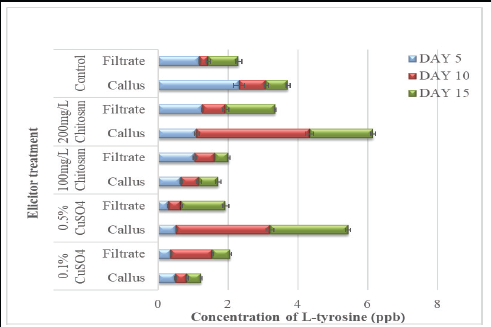Enhanced Catecholamine Production in Gomphrena globosa Suspension Cultures
DOI:
https://doi.org/10.5530/ctbp.2024.4.44Keywords:
Catecholamines, Gomphrena globosa, LCMS/MS, elicitation, suspension cultureAbstract
Secondary metabolites (SMs) are small organic molecules produced by plants that are mostly not essential for their growth, development and reproduction but are produced to confer a selective advantage to the plant. Since their concentration in the plant in a natural environment are low, the plants are many a times stimulated to enhance their production especially when they have significant commercial and medicinal applications. Elicitation is a technique used in tissue culture wherein external elicitors, either biotic or abiotic, induce stress in the plant thereby leading to stimulation of production of specific plant secondary metabolites. Catecholamines and their precursors have many medicinal applications and have been reported to occur in Gomphrena sp. The present study successfully identified elicitors (chitosan and copper sulphate) for the enhanced production of catecholamines and its precursors from suspension cultures of G. globosa. Both the biotic and abiotic elicitors were used in different concentration so as to compare the effect of each on catecholamine and/or precursor concentrations in the suspension cultures. Successful elicitation of these precursors as well as catecholamines was standardized using G. globosa callus as a model system.



